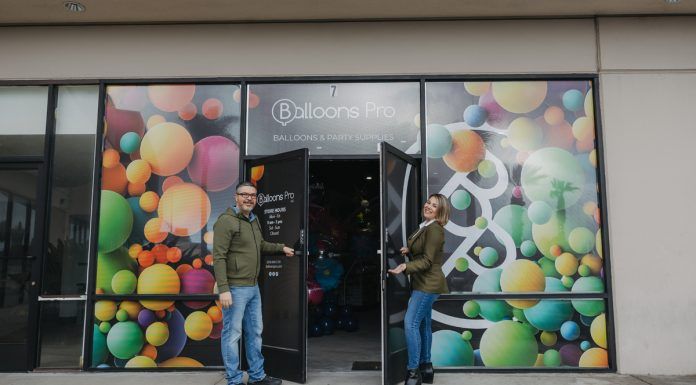Between 2019 and 2020 there was a 200% increase in fentanyl deaths. The estimate for 2021 is estimated around 700 deaths, doubling 2020, and the number could be higher. Fentanyl deaths had an expedited spike that began in 2015/16. After 2016/17, most of these deaths occurred from use of counterfeit prescriptions and on the street narcotics that contained fentanyl.
“And it is getting worse,” said Institute for Public Strategies Program Manager David Shorey during a recent presentation to an East County city council.
“In 2019 we saw 152 deaths, and the statistics for 2020 are 457 deaths. Deaths are occurring mostly in people in their 20s, 30s and 40s, and there are teens that have died. The average age is 37 years old. The entire age range of deaths is between 14 and 76 year old. There have been cases here in San Diego County where a kid has gone to a party. A friend has what looks like a prescription narcotic, they take a pill, and they are dead by the next morning.”
Shorey said these are sobering statistics recently release from the County, showing the impact that fentanyl is having in all regions of the county. IPS is the County’s contracted prevention provider, working on prevention activities in the county’s east and south regions.
“We work alongside communities, build power challenge systems, deal with inequities, protect health, and improve quality of life,” said Shorey.
Shorey said fentanyl is the drug that has basically changed how overdoses are being looked at now. A 2mg dose of fentanyl is a lethal dose. Generally, it has been manufactured in China and imported through Mexico making its way across the border, but production is moving more into Mexico as the drug becomes more in demand. He said due to its small size of doses, it is much easier smuggled into the U.S., unlike large blocks of cocaine, methamphetamine, and marijuana.
“It is often cut into counterfeit prescription pills or other drugs sold on the streets. It is now showing up in almost every street drug, including marijuana,” said Shorey.
Shorey said opioid use connected with an opioid overdose is many times connected with racial and social inequities and social economic boundaries.
“All of these have an impact on addresses the opioid crisis,” he said. “African Americans, American Indians, Alaskan natives have a higher incidence of opioid deaths due to synthetic opioids, versus the white community. Poverty has an impact on opioid use.”
Shorey said in working with a community to raise awareness, it needs do be done in a way that is culturally sensitive, focused on the message of prevention, and not focused on the drug use. Shorey said it is imperative to talk to the community “in a way that they can hear you.”
“We also want to think about ways in barriers to treatment, looking at age, race, culture barriers, targeting low-income, and those experiencing homelessness,” he said. “All of these have a way of reducing opioid as well as other drugs that impact our community. A nexus of looking at opioid misuse is looking at medically assisted treatment, addressing the whole person, treating the disorder as a disorder and not stigmatizing it, and looking into behavioral health issues and provide behavioral support.”
Shorey said stigma not only stops people from getting treatment but admitting that they have a problem. Shorey said it was important to note that this issue deals with communities impacted by the war on drugs, and people must have a that conversation because it raises the amount of trauma for those communities.
“’You are a junkie. You are an addict.’ Those things we need to remove from our vocabulary and start talking on how to provide structure, access to healthcare, resources, and how to change the vocabulary that we use when dealing with opioid issues,” he said.
“If a person who goes to a party, uses what they perceive to be a Xanax, but it is actually an illegal or counterfeit, and they die, are they a criminal or are they a victim?” Shorey continued. “Many of the people who overdosed were first time users. And most fentanyl overdose victims did not know they purchased a drug with fentanyl in it. Many were recreational users.”
Shorey said a recent study of adult arrestees, 68% said they would not purchase a drug that contained fentanyl, but that it is now everywhere in counterfeit pills.
Shorey said in getting awareness to parents and youth, the last thing they want to spark is rebellion. He said stick to talking about the seriousness of the drug and it impacts, be realistic, use no scare tactics, and to understand that experimentation is part of growing up.
Naloxone/Narcan is a medication that the County now has a standing order, that you can go to a county clinic and get a dose or Narcan, which reverses the opioid overdose. It can cause sudden withdrawal, but it is not something you can become dependent on, and it has no effect if an opioid is not present. Naloxone can not get you high, and the negative side effects are rare, if any. How it works is that opioids connect with brain receptors, the Naloxone goes in and knocks it out and it also binds with the receptor so that the opioid cannot reconnect.
“It does not fix them,” said Shorey. “It does not stop the overdose. It simply impedes the overdose. The drug is still in the body, and they need to get to a medical professional by calling 911 and getting a first responder to the overdose event. Everyone should carry Naloxone. It should be as common as a fire extinguisher or a first aid kit.”
Anyone can carry Narcan under Assembly Bill 635. Individuals are permitted to possess and administer naloxone in and emergency, and they are protected from civil or criminal prosecution.















